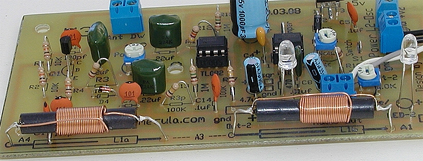"Heorhii, that circuit uses fairly complex inductors. What is the reason you've chosen it?"
I'm looking for a schematic based on tranzistors with both pitch and volume antennas implemented. At the moment, i stopped on mentioned schematic (Moog, 1961) and EMTheremin ones, but in both I've met some problems with inductors. Bourns 6300 series, Toko inductors are unavaliable in my country (and too expensive for me in case of ordering from abroad), so, if i'll decide to build according to one of those articles, I have to produce them by my self.
Current schematic attracted me because of it's simplicity and included description of how to produce some coils (L2, L3, T1, T2), but design details of their forms (which I also use to produce by my self in case of choosing this schematic) as well as their performance parameters are remain uknown to me. In addition, this schematic includes Bourns 6300 series rf chokes, which parameters are avaliable in datasheets.
But in EMTheremin schematic all inductors have their own avaliable datasheets, information from which may be used for their production.
How do you think, which variant is more real to produce?
Also any info on producing, design and parameters of mentioned inductors or schematics with less hard-to-get components will be highly appreciated!
Thanks for your reply!



